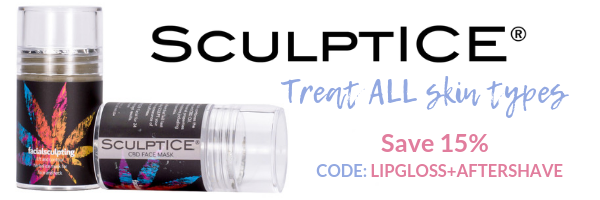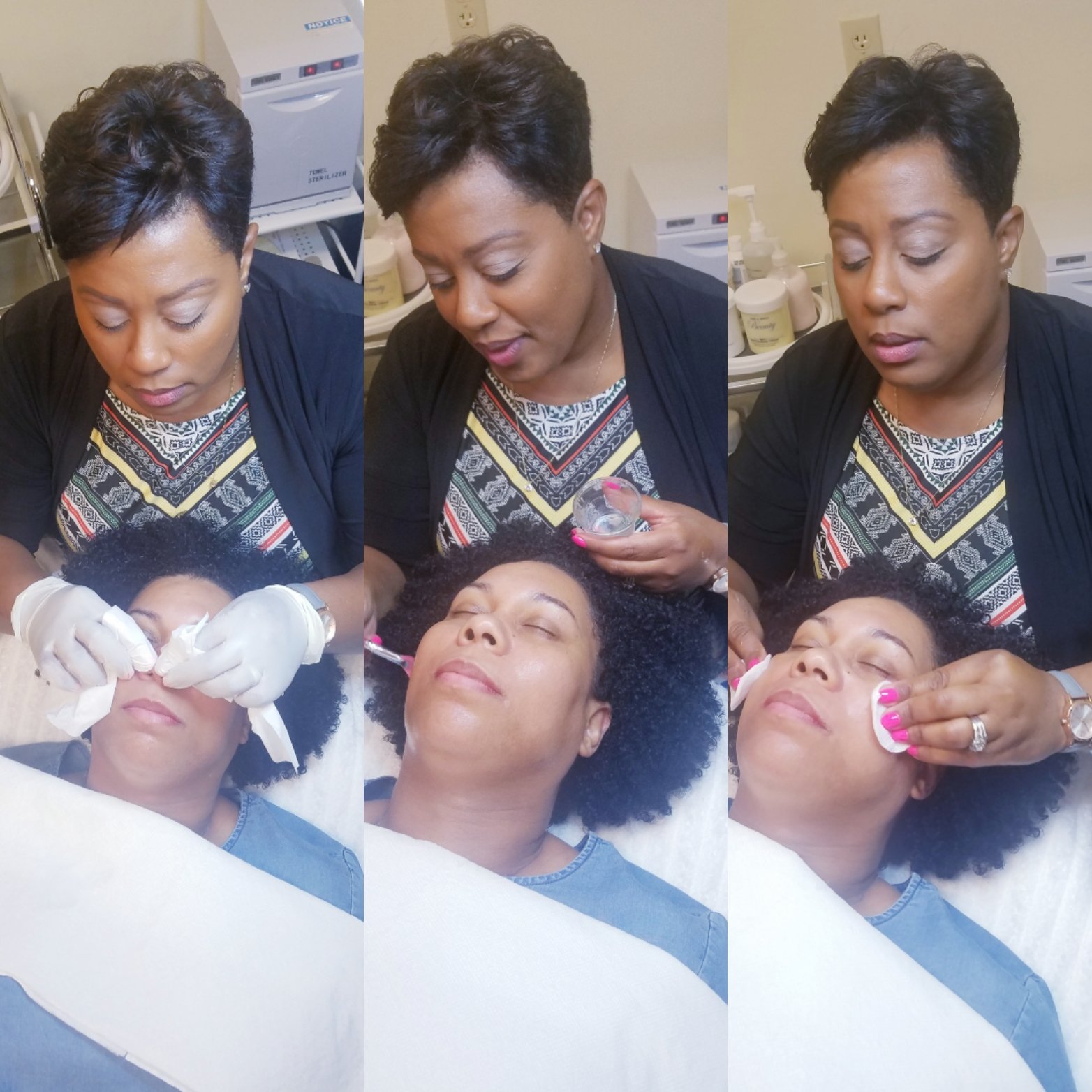By JoElle Lee
How to use chemical peels for skin of color is a growing segment of the skin care market because much of the world’s population consists of people of color. The non-Caucasian population is currently 29.4% with large estimated growth rates ranging from 8% to 36% in many ethnic groups. Skin care professionals who ignore this phenomenon of a growing multitude of races are out of touch with reality concerning these skincare trends that will dictate their esthetic career in the near future. Skin care professionals that feel they don’t need to learn treatments specific to people of color or make people of color part of their target market, will miss the opportunity to learn how to work with this ever-increasing population successfully.
Skincare professionals must prepare for this prospect and learn to recognize what is appropriate and inappropriate concerning skincare treatments, ingredients and products for skin of color.
By the year 2050, more than 50% of the U.S. population will be of non-European descent.
“Global skin of color is the future of your skincare clientele.”
Chemical Peels for Skin of Color and Common Skin Conditions
One of the most common skin conditions seen in ethnic skin types is PIHP (Post inflammatory Hyperpigmentation). It is estimated that 65% of black clients and 53% of Hispanic and Asian clients experience some form of hyperpigmentation. The common link to any pigmentation disorder is inflammation. This may occur from skin inflammation due to acne conditions, other skin eruptions and irritations, misuse and overuse of certain skincare products, over-stimulation from peelings, microdermabrasion, lasers and many other invasive skincare treatments. Darker skin differs from Caucasian skin in its reactivity and clinical presentation. Many medications, cosmetics and inflammatory skin diseases, in addition to adverse reactions to chemical peels, ingredients, pesticides, chemicals, detergents, heat, laser resurfacing, laser hair removal and skin injuries can also be a source of pigmentation disorders. There are definitely certain precautions that must be taken when treating PIHP, whether it is a home care regimen or a professional skincare treatment.
Chemical Peels for Skin of Color and Aging
Other common ethnic skin conditions treated by skin care professionals are acne, acne scarring, melasma and facial wrinkles. And contrary to popular belief, all people of color as they age experience fine lines and wrinkles, some even experience deep facial wrinkles. Wrinkles are an inevitable part of the natural aging process. Learning how to use chemical peels for skin of color is crucial because as ethnic clients become older the skin gets thinner, drier and less elastic. The skin’s ability to protect itself from damage is also reduced as they age. Eventually, wrinkles, creases and lines form on the skin. However, a person’s genetic makeup also can influence how wrinkly one becomes, and when and where wrinkles start appearing.

Chemical Peels for Skin of Color and TEWL
The stratum corneum of darker skin types is more compact and prone to cohesion. Transepidermal water loss tends to be greater in African American and Asian skins. Losing excessive moisture leads to a reduced ability for the skin to protect itself against topical offenders. This impaired barrier function is thought to contribute to the heightened sensitivity to topical stimulation (e.g. peels). Ethnic skin types also tend to have larger oil glands, leading to more oil production and increased incidences of acne. All these details are important to take into consideration as we create treatment plans and learn how to use chemical peels for skin of color.

I have been an esthetician for over 20 years. Out of all the treatments I have performed over the years, I have found chemical peels to be the most effective and results driven procedure especially for people of color. Chemical peels can retexturize the skin, even, and clear the skin with minimal contraindications. Chemical peel procedures have been studied and tested by many skincare professionals and physicians. They have been proven to be a safe and non-invasive method for effectively correcting and rejuvenating ethnic skin types.
However, when it comes to ethnic skin, you must proceed with these treatments using extreme caution to prevent additional hyperpigmentation, hypopigmentation, scarring or other unwanted complications. There are a variety of peels that are safe and effective to use on ethnic skin. Due to the sensitivity of ethnic skin, it is best to use care when choosing peels and to select them based on the current condition of the skin, along with the skin’s tolerance level.
Most Common Treatments for Most Common Ethnic Skin Conditions
- Enzyme Peels
- AHA (glycolic, lactic, malic, citric)
- BHA (salicylic)
- Jessner’s Peels (modified)
- TCA –Trichloroacetic acid (modified)
- Skin Brightening Gels and Creams
- Hydroquinone
A critical part of treating any ethnic skin condition is the consultation process prior to any professional exfoliation treatment. The consultation should determine the client’s hereditary background. This will give you clues to how that particular client will respond to a chemical peel. Making treatment determinations based solely on how a patient looks is not enough to avoid complications. You must ask about their family’s hereditary history, as those from equatorial regions are more likely to have sensitive, reactive skin that can easily hyperpigment.
Having a solid understanding of the specific characteristics of the skin of ethnic and blended heritage clients will allow you to make better and more appropriate treatment choices and provide outstanding outcomes to all your clients.

Customizing professional treatments that address many conditions, such as acne, acne scarring, and pigment, simultaneously, while not causing unnecessary inflammation, is a clear choice for treating clients of color. The best approach is to enhance the natural resilience of the skin by slowly increasing the potency of the exfoliation process to yield the fastest results with the least amount of downtime. This can be done by prepping the skin with a series of mild to more aggressive peeling procedures. Building and layering peels is a skincare method that must be customized to the client’s current skin condition, exposure to skincare treatments and advanced peeling methods for optimum results.
An example of prepping the skin for a series of “no downtime” chemical peels is listed below:
NOVICE ETHNIC SKIN CLIENT PROFILE
- Has never had a skincare treatment before
- Has not been under a doctor’s care for skincare conditions or disorders
- Is not using skincare prescriptions
- Does not have a home skincare regimen
NOVICE ETHNIC SKIN CLIENT “NO DOWNTIME” PEEL SERIES PROTOCOL
This protocol is for a series of 6 chemical peel treatments with the option of using a 2-6% hydroquinone-based product or other lightening agents for the treatment of hyperpigmentation conditions. It is recommended that you follow the lightening product protocol during the series to prevent the “halo” effect around dark areas while treating the skin so it is not obvious that the client is using a bleaching agent and so that all the skin can even out simultaneously.
Is your client more experienced with chemical peels, or are you more familiar with their skin?
EXPERIENCED MULTICULTURAL SKIN CLIENT PROFILE
- Has had skincare treatments in the past, but is not consistent
- Has had enzyme peels, chemical peels, lasers or microdermabrasion treatments, but not on a consistent basis
- Uses acid-based products in home care regimen
EXPERIENCED MULTICULTURAL SKIN CLIENT PEEL PROTOCOL
This protocol is for a series of 6 chemical peel treatments with the option of using a 2-6% hydroquinone-based product or other lightening agents for the treatment of hyperpigmentation conditions. It is recommended that you follow the lightening product protocols during the series to prevent the “halo” effect around dark areas while treating the skin so it is not obvious that the client is using a bleaching agent and so that all the skin can even out simultaneously.
All treatments can be performed on a bi-weekly to monthly basis according to skin sensitivity. Keep in mind that possible contraindications can occur when treating your ethnic clientele. While treating skin conditions, surface hypopigmentation may occur. Be sure to discuss this with clients to avoid upsetting the client. Hypopigmentation is treatable and most likely temporary. Normally within 2 -8 weeks the pigment will naturally return. Acne conditions may also worsen, but this is part of the healing process and will usually start to diminish within a week or two.
Be cautious with ethnic clients that use prescription medications, such as Tazarac, which will cause the skin to be much more sensitive and thinner. This should be discussed in the initial consultation and any medication that you are not familiar with needs to be approved by the attending physician before proceeding with any facial or peel treatments.
Want to learn more about treating ethnic skin? Check out JoElle’s book!
 JoElle Lee, licensed celebrity esthetician
JoElle Lee, licensed celebrity esthetician
JoElle Lee is a licensed celebrity esthetician, skincare specialist, speaker, author, educator, and mentor with over 20 years of experience in the skincare industry. She specializes in “No Downtime” Chemical Peel Treatments, Laser Treatments, HydraFacial Treatments, and Customized Corrective Facial Treatments….Read More.
